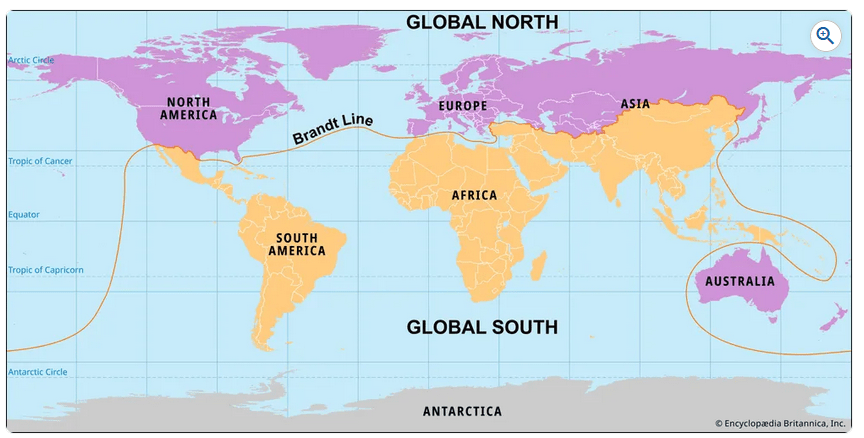What is the difference between a need and a want in consumerism?
A need is something essential for survival (food, water, shelter), while a want is something desirable but not necessary (designer clothes, luxury cars).
What are the five stages of the materials economy?
Extraction, Production, Distribution, Consumption, Disposal.
Define minimalism.
What do the terms Global North and Global South describe?
The inequality between wealthier, industrialized nations (North) and poorer, less industrialized ones (South).
Define carbon footprint.
The total greenhouse gases released by a person, product, or activity.
During which historical period did modern consumerism begin to emerge?
The Industrial Revolution in the 18th and 19th centuries.
Why is the system described as “linear” and why is this a problem?
Because resources flow in a straight line (take–make–dispose). On a finite planet, it’s unsustainable.
What did I do last weekend?
Being sick (not in a good way) and playing vidya games.
Draw a world map on the board and show which continents and countries belong to the Global North and which to the Global South.

What does greenwashing mean?
Misleading marketing that makes a company seem more eco-friendly than it is.
Considering Marlowe's hierarchy of needs, does consumer culture provide us with everything we need?
No, because it mainly accounts for lower needs such as food, clothing, etc, and not higher needs like the desire to fulfill one's potential or have close connections.
What percentage of materials are still in use six months after purchase in North America?
Only 1%.
How did Daniel Miller argue that shopping can be seen as an act of love?
Purchases show care and concern for family needs, not just selfish consumption.
How does colonial history connect to modern inequalities between North and South?
Colonialism extracted resources and wealth from the South to enrich the North, creating lasting economic disparities.
Define commodification and give one example.
Turning something of social or natural value into a market product; e.g., bottled water.
Define materialism in the context of consumer culture.
The belief that owning possessions and wealth leads to happiness and success.
Define planned obsolescence and give an example.
Designing products to break quickly so they must be replaced; e.g., smartphones made incompatible with new updates.
How did critics argue that minimalism can be “classist”?
Because only wealthy people can afford to “invest” in durable, expensive goods or choose not to buy.
Give an example of how climate change demonstrates the inequality between North and South.
The North produces more emissions, but the South suffers more from droughts, floods, and displacement.
What is an externality? Give one negative example.
A side effect of economic activity not included in price; e.g., pollution from a factory.
Give an example of how advertising commodifies a basic human necessity.
Clothing is a need, but advertising sells it as a symbol of status or identity.
Define perceived obsolescence and give an example.
Convincing people to discard working products because they look outdated; e.g., fashion trends changing rapidly.
What is meant by heirloom materialism?
Buying only high-quality, long-lasting items instead of disposable ones.
Why are the terms “Global North” and “Global South” considered more useful than “First World” and “Third World”?
Because they highlight economic and historical inequalities without derogatory undertones.
Define circular economy.
A sustainable system where materials are reused, repaired, or recycled instead of discarded.
How did advertising and media in the 20th century shape consumer culture?
They promoted the idea that buying new products improves life and social status, turning consumption into a central part of identity.
According to Annie Leonard, why do advertisements exist?
To make people unhappy with what they have and encourage constant buying.
What two strategies keep people buying more, according to Victor Lebow’s post-WWII analysis?
Planned obsolescence (products designed to wear out) and perceived obsolescence (convincing people their items are outdated).
What are two major limitations of the Global North/South framework?
It oversimplifies diverse countries and ignores inequalities within each region.
What is ethical consumption and give one example.
Ethical consumption means buying products that aim to reduce harm and support fairness or sustainability.
Example: Purchasing Fairtrade coffee or second-hand clothing instead of fast fashion.
Explain how consumerism connects personal identity to ownership.
People are often judged or define themselves by what they own rather than who they are, e.g., wealth and success measured by possessions.
Why does Leonard argue that recycling, while important, is not enough?
Because most waste is created upstream in production and many products are designed not to be recyclable.
Why do critics say individual actions are not enough to solve consumer waste problems?
Because corporations and governments control production and policy, making large-scale systemic change necessary.
Explain how consumerism in the Global North affects the Global South.
Northern consumption relies on Southern resources, cheap labor, and often shifts waste disposal to the South.
Define consumer culture in one sentence.
A way of life where happiness, identity, and status are tied to buying and owning goods.